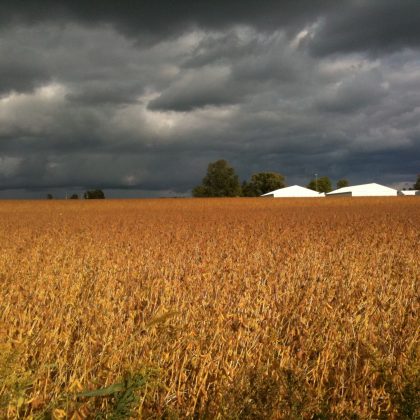Reviewing new traits and phenotyping strategies in dairy cattle
The animal Article of the Month for February is entitled ‘Overview of new traits and phenotyping strategies in dairy cattle with a focus on functional traits’
The review paper “Overview of new traits and phenotyping strategies in dairy cattle with a focus on functional traits” provides insight into recent research related to the implementation of novel traits in dairy cattle genetic improvement programs. Conditions of production, as well as consumer demands, will have an impact on the future availability of new phenotypes. Traits connected with animal health, animal welfare, food safety, climate change and efficiency will become more important. Balanced breeding goals ensuring high yields by robustness and good health status and efficiency will increase in economic importance. Advances in automation provide possibilities for easy recording of new traits.
The trait complexes covered are direct health traits, udder health, reproduction, metabolic status, feet and legs, calving traits, feed efficiency, other novel traits such as behaviour, traits based on data from automated milking systems, adaptation to climate change, sucking traits, milk fatty acids, milk coagulation properties, and beef traits. Recording strategies and challenges for successful implementation and adaption by farmers are discussed.
Advances in technology will enable more precise trait definitions, with phenotypes closer to the genotype. Technological advances will permit the closer integration of existing data sources. New technologies are expected to provide better indicator traits for fertility, mastitis, metabolism, and energy efficiency. This will be very important for improving traits with phenotypes that are expensive or difficult to measure. There are still challenges to solve before some technologies can be widely applied on a routine basis, including the predictive biology of biomarkers, like metabolites or milk components, the harmonization of data out from automated systems, the motivation of farmers to record high-quality phenotypes, and the genomic gap for novel traits. To overcome the phenomic gap between traditional traits and novel traits, expanded genotyping of cows should be considered. The resulting genotypes can then be used to predict missing phenotypes.
International cooperation will ensure that trait definitions are consistent across countries, and will support the research necessary to deliver new management and selection tools to farmers. Successful programs for animal improvement will require a balance between the effort needed to record data and the resulting benefits to farmers. Simplicity and ease-to-use for farmers will be limiting for extensive implementation into routine procedures.
The Open Access review is available here
Authors: C. Egger-Danner, J.B. Cole, J.E. Pryce, N. Gengler, B. Heringstad, A. Bradley and K.F. Stock
The animal Article of the Month is selected by the Editor-in-Chief and is freely available for one month.






